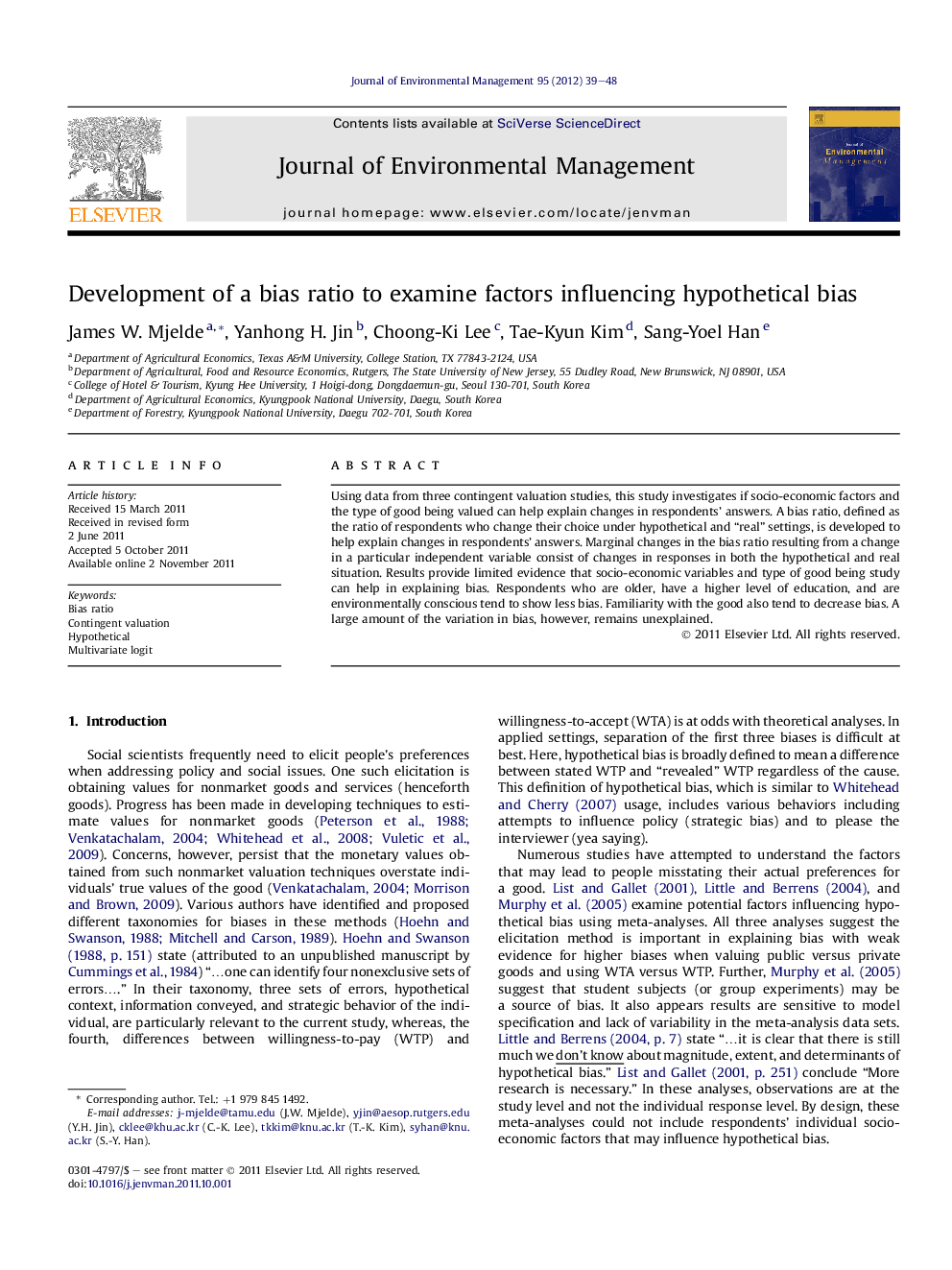| Article ID | Journal | Published Year | Pages | File Type |
|---|---|---|---|---|
| 1056918 | Journal of Environmental Management | 2012 | 10 Pages |
Using data from three contingent valuation studies, this study investigates if socio-economic factors and the type of good being valued can help explain changes in respondents’ answers. A bias ratio, defined as the ratio of respondents who change their choice under hypothetical and “real” settings, is developed to help explain changes in respondents’ answers. Marginal changes in the bias ratio resulting from a change in a particular independent variable consist of changes in responses in both the hypothetical and real situation. Results provide limited evidence that socio-economic variables and type of good being study can help in explaining bias. Respondents who are older, have a higher level of education, and are environmentally conscious tend to show less bias. Familiarity with the good also tend to decrease bias. A large amount of the variation in bias, however, remains unexplained.
► We develop the concept of a bias ratio. ► Marginal changes in the bias ratio measure respondents’ changes in responses to both hypothetical and real situations. ► Respondents who are older, have a higher level of education, and are environmentally conscious tend to show less bias. ► Familiarity with the good also tended to decrease bias. ► A large amount of the variation in bias, however, remains unexplained.
